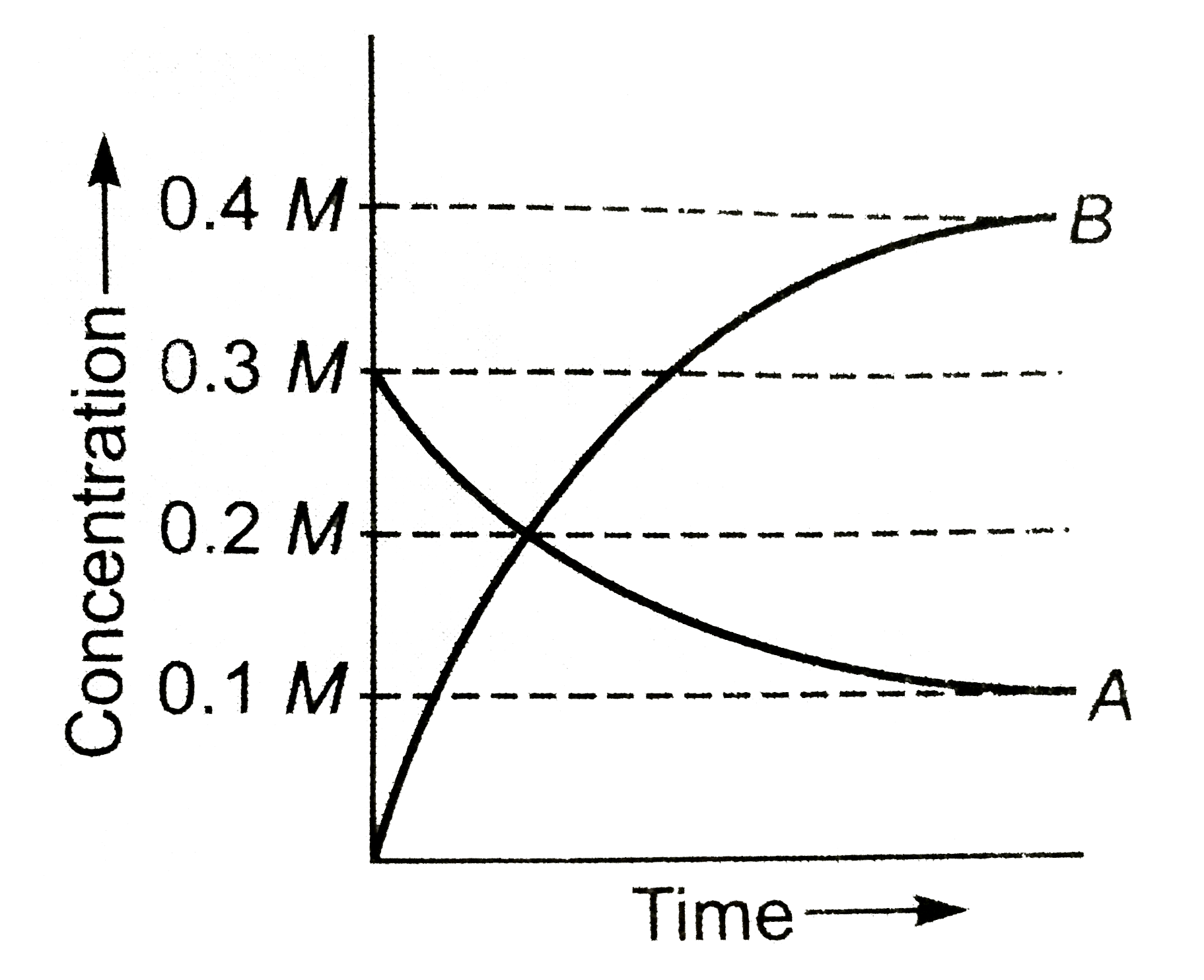Addition of inert gas to system at equilibrium changes only Kp not Kc.
To assess the correctness of the statement "Addition of inert gas to system at equilibrium changes only Kp, not Kc," we will analyze the effects of adding an inert gas to a chemical equilibrium system.
1. Understanding the Equilibrium Constant Expressions:
- For a general reaction:
A+B⇌C
- The equilibrium constant Kc in terms of concentrations is given by:
Kc=(C)(A)(B)
- The equilibrium constant Kp in terms of partial pressures is given by:
Kp=PCPAPB
2. Effect of Adding Inert Gas at Constant Volume:
- When an inert gas is added to the system at constant volume, the concentrations of the reactants and products do not change because the volume remains constant.
- Therefore, the equilibrium constant Kc remains unchanged:
K′c=(C)(A)(B)=Kc
3. Effect of Adding Inert Gas at Constant Total Pressure:
- If we consider the addition of an inert gas at constant total pressure, the partial pressures of the reactants and products will change.
- However, the equilibrium constant Kp is also a function of the ratio of partial pressures, which remains unchanged because the ratio of the moles of products to reactants does not change:
K′p=PCPAPB=Kp
4. Conclusion:
- Since neither Kc nor Kp changes with the addition of an inert gas, the statement "addition of inert gas to system at equilibrium changes only Kp not Kc" is false. Both Kc and Kp remain constant.
Final Answer:
The statement is false; the addition of an inert gas does not change either Kp or Kc.
- For a general reaction:
A+B⇌C
- The equilibrium constant Kc in terms of concentrations is given by:
Kc=(C)(A)(B)
- The equilibrium constant Kp in terms of partial pressures is given by:
Kp=PCPAPB
- When an inert gas is added to the system at constant volume, the concentrations of the reactants and products do not change because the volume remains constant.
- Therefore, the equilibrium constant Kc remains unchanged:
K′c=(C)(A)(B)=Kc
- If we consider the addition of an inert gas at constant total pressure, the partial pressures of the reactants and products will change.
- However, the equilibrium constant Kp is also a function of the ratio of partial pressures, which remains unchanged because the ratio of the moles of products to reactants does not change:
K′p=PCPAPB=Kp
- Since neither Kc nor Kp changes with the addition of an inert gas, the statement "addition of inert gas to system at equilibrium changes only Kp not Kc" is false. Both Kc and Kp remain constant.
The statement is false; the addition of an inert gas does not change either Kp or Kc.
Topper's Solved these Questions
- CHEMICAL EQUILIBRIUMBOOK - CENGAGE CHEMISTRY ENGLISHCHAPTER - CHEMICAL EQUILIBRIUMEXERCISE - Archives (Multiple Correct)
6 Videos
- CHEMICAL EQUILIBRIUMBOOK - CENGAGE CHEMISTRY ENGLISHCHAPTER - CHEMICAL EQUILIBRIUMEXERCISE - Archives (Single Correct)
9 Videos
- CHEMICAL EQUILIBRIUMBOOK - CENGAGE CHEMISTRY ENGLISHCHAPTER - CHEMICAL EQUILIBRIUMEXERCISE - Exercises (Fill In The Blanks)
35 Videos
- CHEMICAL BONDING AND MOLECULAR STRUCTUREBOOK - CENGAGE CHEMISTRY ENGLISHCHAPTER - CHEMICAL BONDING AND MOLECULAR STRUCTUREEXERCISE - Archives Subjective
15 Videos
- CLASSIFICATION AND NOMENCLATURE OF ORGANIC COMPOUNDSBOOK - CENGAGE CHEMISTRY ENGLISHCHAPTER - CLASSIFICATION AND NOMENCLATURE OF ORGANIC COMPOUNDSEXERCISE - Analytical and Descriptive Type
3 Videos
Similar Questions
Knowledge Check
Assertion : The additions of an inert gas at constant volume to a system at equilibrium does not affect the state of equilibrium
Reason: The inert gas does not react with any of the reactants or products.AIf both Assertion and Reason are CORRECT and a Reason is the CORRECT explanations of the AssertionBIf both Assertion and Reason are CORRECT but Reaon is not CORRECT explanation of the Assertion.CIf Assertion is CORRECT but Reasson is INCORRECT.DIf Assertion is INCORRECT but Reason is CORRECT.
Vant's Hoff's equation shows the effect of temperature on equilibrium constants Kc and Kp .The KP varies with tempertaure according to the relation:
View SolutionFor a given reversible reaction at a fixed temperature, equilibrium constants Kp and Kc are related by ………
View SolutionIn a chemical equilibrium, Kc=Kp when
View SolutionFor a gaseous reaction 2B→A, the equilibrium constant Kp is ……… to/than Kc.
View SolutionAt a certain temperature and 2 atm pressure equilibrium constant (Kp) is 25 for the reaction
SO2(g)+NO2(g)⇔SO3(g)+NO(g)
Initially if we take 2 moles of each of the four gases and 2 moles of inert gas, what would be the equilibrium partial pressure of NO2?
View SolutionThe figure shows the change in concentration of species A and B as a function of time.
The equilibrium constant Kcfor the reactionA(g)⇔2B(g) is :

View SolutionFor a gaseous reaction
aA(g)+bB(g)⇔cC(g)+dD(g)
equilibrium constants Kc,Kp and Kx are represented by the following reation
Kc=[C]c[D]d[A]a[B]b,Kp=Pcc.PdDPaA and Kx=xcC.xdDxaA.xbB
where [A] represents molar concentrationof A,pA represents partial pressure of A and P represents total pressure, xA represents mole fraction of For the following equilibrium relation betwen Kc and Kc (in terms of mole fraction) is
PCl3(g)+Cl2(g)⇔PCl5(g)
View Solution
